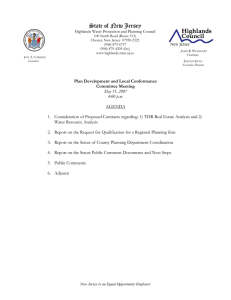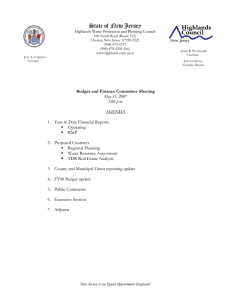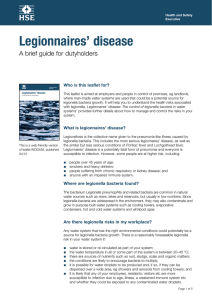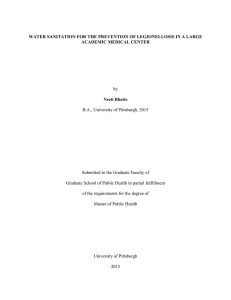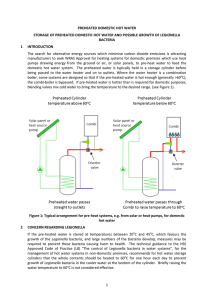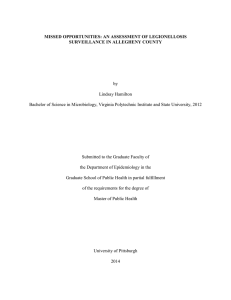Legionella
advertisement
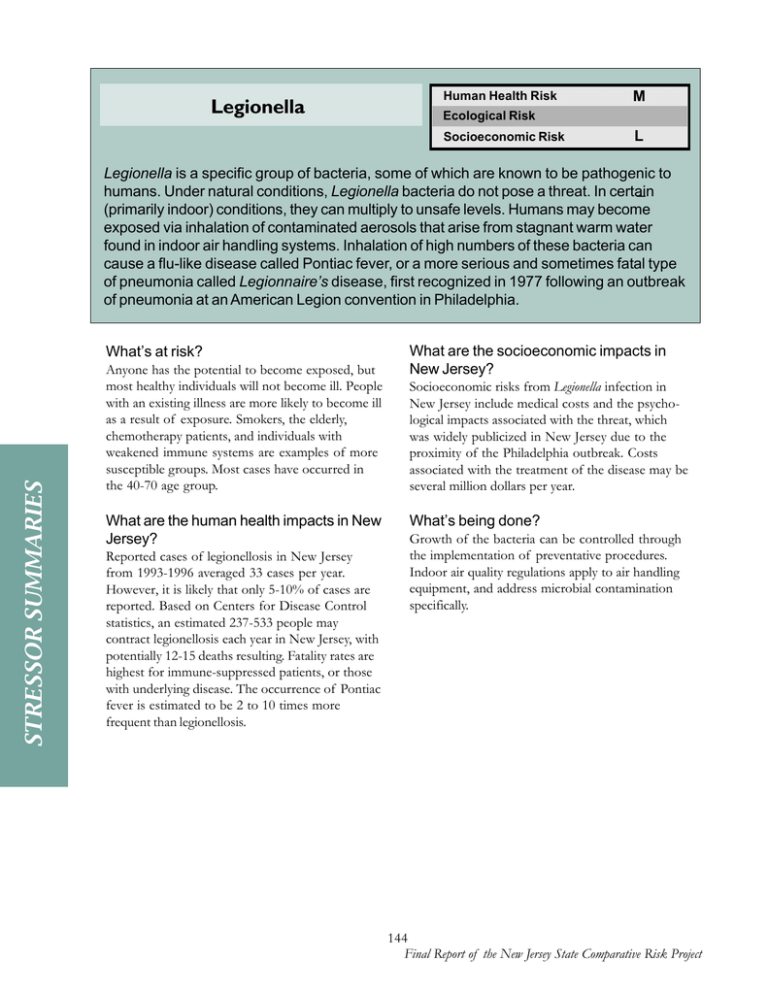
Legionella Human Health Risk M Ecological Risk Socioeconomic Risk L Legionella is a specific group of bacteria, some of which are known to be pathogenic to _ humans. Under natural conditions, Legionella bacteria do not pose a threat. In certain (primarily indoor) conditions, they can multiply to unsafe levels. Humans may become exposed via inhalation of contaminated aerosols that arise from stagnant warm water found in indoor air handling systems. Inhalation of high numbers of these bacteria can cause a flu-like disease called Pontiac fever, or a more serious and sometimes fatal type of pneumonia called Legionnaire’s disease, first recognized in 1977 following an outbreak of pneumonia at an American Legion convention in Philadelphia. STRESSOR SUMMARIES What’s at risk? Anyone has the potential to become exposed, but most healthy individuals will not become ill. People with an existing illness are more likely to become ill as a result of exposure. Smokers, the elderly, chemotherapy patients, and individuals with weakened immune systems are examples of more susceptible groups. Most cases have occurred in the 40-70 age group. What are the human health impacts in New Jersey? Reported cases of legionellosis in New Jersey from 1993-1996 averaged 33 cases per year. However, it is likely that only 5-10% of cases are reported. Based on Centers for Disease Control statistics, an estimated 237-533 people may contract legionellosis each year in New Jersey, with potentially 12-15 deaths resulting. Fatality rates are highest for immune-suppressed patients, or those with underlying disease. The occurrence of Pontiac fever is estimated to be 2 to 10 times more frequent than legionellosis. What are the socioeconomic impacts in New Jersey? Socioeconomic risks from Legionella infection in New Jersey include medical costs and the psychological impacts associated with the threat, which was widely publicized in New Jersey due to the proximity of the Philadelphia outbreak. Costs associated with the treatment of the disease may be several million dollars per year. What’s being done? Growth of the bacteria can be controlled through the implementation of preventative procedures. Indoor air quality regulations apply to air handling equipment, and address microbial contamination specifically. 144 Final Report of the New Jersey State Comparative Risk Project
